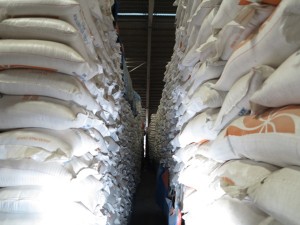The economic team expects inflation to ease this year such that the Development Budget Coordination Committee (DBCC) yesterday slashed its forecast to 2.7-3.5 percent.
The headline inflation assumption for 2019 was at a higher range of 3-4 percent previously, but DBCC Chair and Department of Budget and Management officer in charge Janet Abuel said they expected a lower rate of increase in prices of basic commodities this year “due to the government’s decisive steps to stabilize the general price level.”
“These include the full implementation of presidential directives issued last year to increase food supply and the passage of the Rice Liberalization Act, which opened up the rice sector and helped bring rice prices down,” Abuel said.
For 2020 to 2022, the inflation assumption was kept at a range of 2-4 percent yearly.
The DBCC also expects a stronger peso this year, hence adjusting its peso-US dollar exchange rate assumption for 2019 to 51-53:$1 from 52-55 to a greenback previously.
Between 2020 and 2022, the forex (foreign exchange) assumption was calibrated to 51-55:$1 from 52-55:$1 during the previous DBCC meeting in March, as Abuel said the economic team projected “the possible appreciation of the peso with easing inflation pressures and positive market sentiment with the recent sovereign credit rating upgrade of the Philippines.”
Abuel was referring to the move of debt watcher S&P Global Ratings in April, raising its long-term credit rating for the Philippines to BBB+, two notches above minimum investment grade.
Credit ratings are a measure of a government’s credit worthiness. As the stability of state finances is also related to a country’s performance, credit scores serve as a proxy grade for the economy.
Improved ratings would allow the government to demand lower rates when it borrows from lenders, which could translate to lower interest rates for consumers and businesses borrowing from banks using government-issued debt paper as benchmarks for their loans.
The Philippines currently enjoys investment-grade credit ratings from the top three debt watchers namely Moody’s Investors Service, Fitch Ratings Inc. and S&P.
As for gross domestic product growth, the DBCC kept the following targets: 6-7 percent this year, 6.5-7.5 percent next year, and 7-8 percent in 2021 and 2022.
The economy grew 6.2 percent last year—a three-year low, mainly as inflation hit a 10-year high of 5.2 percent due to new or higher excise slapped on consumption under the Tax Reform for Acceleration and Inclusion Act, skyrocketing global oil prices and domestic food supply bottlenecks, especially of rice.


